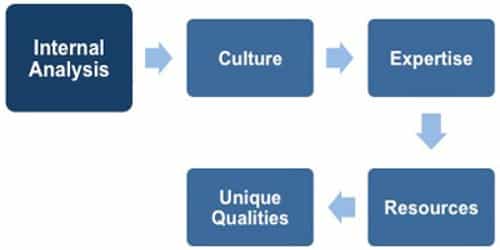Internal Environment Analysis
Generally, the internal analysis is a part of SWOT analysis which includes strengths and weakness analysis of an organization. Internal analysis means the systematic analysis of all the factors of the internal environment of a firm so that the management can identify the strengths and weakness of the factors to take necessary actions. It is the procedure of identifying the assets and obstacles that define your company’s potential and limitations.
Importance and advantages of internal analysis –
Managers perform internal analysis to identify strengths to build on and weakness to overcome as they formulate strategies for competitive advantages. However, the objectives or benefits of internal analysis are as follows:
- To hold the strengths;
- To identify the weakness;
- To take the opportunities from an external environment;
- To adjust to the external environment;
- To determine the profitability index;
- Strategy formulation;
- To co-ordinate the managerial functions;
- To take competitive advantages.
Areas covered by an internal analysis –
The internal environmental analysis evaluates relevant factors in an organization in order to determine its strengths and weaknesses. The areas that .organizations should analyze in performing an internal environmental analysis are discussed below:
- Financial position;
- Product or service position;
- Product or service quality;
- Marketing capability;
- Research and development capability;
- Organizational structure;
- Human resources;
- The condition of facilities and equipment;
- Past and current objective and strategies.















